By Steve Zaloga
U.S. portable flamethrowers were first used in combat during the Guadalcanal campaign in January 1943. It quickly became apparent that the exposed flamethrower operator was vulnerable to Japanese small arms fire. So the idea arose to mount the portable flamethrowers in a tank as a means to reach Japanese bunkers without excessive casualties. After some experimentation in New Caledonia in the autumn of 1943, the first combat use of American flamethrower tanks took place in January 1944 on Bougainville in a little-known encounter against an enemy stronghold called the “Hornet’s Nest.”
Making the M1 Flamethrower
The production of the M1 portable flamethrower began shortly before the outbreak of war in late 1941. This early design proved to be an extremely troublesome weapon, suffering from erratic ignition, short battery life, and poor durability in damp conditions. The M1 flamethrower was used successfully in combat for the first time during the fighting on Guadalcanal on January 15, 1943. In one attack, a team of engineers supporting the 8th Marines, 2nd Marine Division carefully crawled to within 25 yards of a bunker defense line and burned out three bunkers during a day’s fighting. The Army’s flamethrower actions the same day were less successful.
These early flamethrowers continued to be used in combat in the Solomons, as well as elsewhere in the Southwest Pacific Area (SWPA) such as Buna on the island of New Guinea and on the island of New Georgia. The initial combat use of the M1 flamethrower proved frustrating because of technical problems with the devices and the lack of established technical and tactical training. The M1 weighed over 60 pounds loaded and so was very difficult to carry in jungle conditions. Not only was the operator burdened with a heavy and bulky weapon, but it was impossible to hide once the flamethrower was ignited. Invariably, the use of flamethrowers would provoke a hailstorm of small arms and mortar fire from the Japanese defenders.
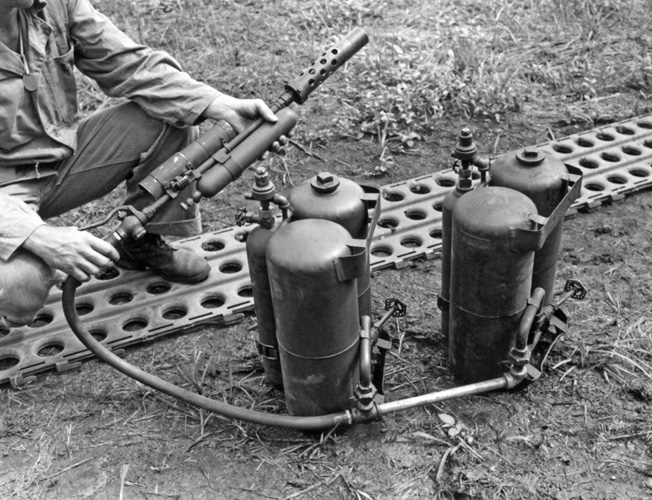
The technical problems with the M1 portable flamethrower led to the improved M1A1, which entered production in December 1942. This version had several upgrades and could use thickened fuel to provide better range. In spite of the modifications, it still suffered from reliability problems, especially with the ignition system in humid conditions. The first M1A1 flamethrowers reached the South Pacific in August 1943. With the arrival of the new flamethrowers came training teams from the Chemical Warfare Service (CWS) to help instruct the troops in how to maintain and operate the devices.
The Idea Behind the Flamethrower Tank
The idea of mounting the portable flame-thrower in a tank occurred in the late summer of 1943 on New Caledonia, where some of the CWS personnel were training flamethrower troops. An officer in the 754th Tank Battalion had the idea of firing the flamethrower out of the small pistol ports on the turret of the M3A1 Stuart light tank. Official U.S. Army accounts of flamethrower development do not identify the inventor of the idea, but some memoirs suggest that it was the brainchild of Lt. Col. Joseph Hart, who commanded the 754th Tank Battalion at the time. The use of the portable flamethrower from the tank seemed like a good idea since it would enable the operator to get within effective range of Japanese bunkers while being far less vulnerable to Japanese small arms fire. In practice, firing the flame gun through the pistol port proved difficult because of the cramped conditions inside the light tank. The turret could barely fit the two-man crew, and trying to maneuver the long flame gun inside the turret proved nearly impossible.
The fighting on New Georgia in July 1943 against tenacious Japanese bunker defenses invigorated the effort to develop a more satisfactory mounting. The most systematic work on tank flamethrowers took place near Noumea on New Caledonia, where the I Marine Amphibious Corps was based. In August 1943, the U.S. Army XIV Corps began experiments to adapt the M1A1 flamethrower to the bow machine gun mount in the M3A1 light tank. A system was devised to shorten the M1A1 flame gun to make it more suitable for mounting in the .30-caliber ball mount in the M3A1.
Two five-gallon fuel unit assemblies from the M1A1 portable flamethrower were used, one on the floor in front of the bow gunner’s seat and one behind the seat where .30-caliber machine-gun ammunition was normally carried. These improvised tank flamethrowers were mounted in light tanks of both the 3rd Marine Tank Battalion and the Army’s 754th Tank Battalion. In October 1943, a demonstration was held near Noumea to acquaint Marine and Army officers, as well as Australians and New Zealanders, with the new weapon. The intention was to deploy the tank flamethrower in time for the November 1, 1943, landings on Bougainville.
Equipping the Marines with Flamethrower Tanks
The 3rd Marine Tank Battalion was deployed during the first phase of the Bougainville fighting, but there is no evidence that the tank flamethrowers were used at this time. The first recorded use came three months later when U.S. Army units replaced the Marines during the expansion of the Bougainville bridgehead in late January 1943.
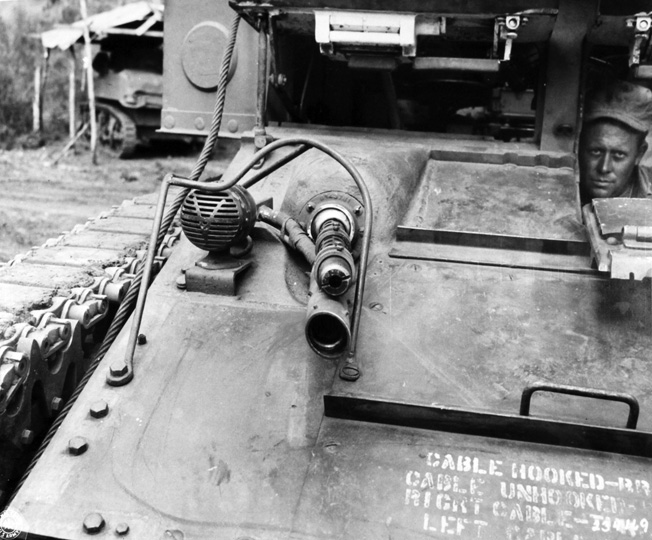
The 754th Tank Battalion (Light) had departed the port of New York in January 1942 and arrived on New Caledonia on March 12, 1942, one of the first U.S. Army tank battalions sent to the South Pacific after the outbreak of the war. It was originally configured as a light tank battalion, equipped with M3 light tanks and later with the improved M3A1. Forward detachments of the battalion deployed to Guadalcanal in May and August 1943 under the XIV Corps but were not committed to combat. The battalion began to reorganize in November 1943, switching from a light tank configuration to a mixture of three medium tank companies and one light tank company. It took some time for the equipment to arrive, so the two tank companies of the forward detachment sent to Bougainville were still equipped with light tanks.
Some of the M3A1 light tanks were fitted with the improvised tank flamethrowers on New Caledonia before departing for Bougainville. In late October 1943, Major Reino Lehtonen assumed command of the battalion and led the forward detachment sent to Bouganville. When first deployed on Bougainville, Lehtonen’s detachment was assigned to the XIV Corps reserve.
The Hornet’s Nest on Bougainville
The initial landings on Bougainville in November 1943 had been conducted by the 3rd Marine Division, but Vice Admiral William “Bull” Halsey wanted the division for the forthcoming New Ireland landings. As a result, the U.S. Army’s Americal Division was alerted on November 25, 1943, and began replacing the Marine regiments in mid-December 1943. The operational objective of the XIV Corps at the time was to push out the beachhead area to permit the unfettered operation of coastal airfields that were being used to harass the Japanese stronghold of Rabaul on the island of New Britain. The division’s 132nd Infantry Regiment was on the far right flank facing the Torokina River. This sector was defended by the Japanese 4th South Seas Garrison, a regimental-sized force that included three infantry battalions.
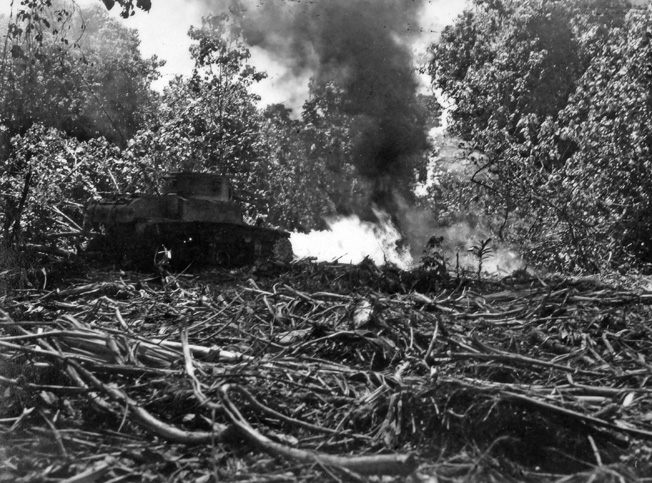
Following the U.S. landings on Bougainville, the Japanese forces had built up a series of defense lines along the perimeter of the beachhead anchored by reinforced log bunkers and entrenchments. The 2/132nd Infantry began moving toward this defense perimeter in mid-January 1944 and set up defensive positions along the jungle fringe. Periodic patrols east of these positions disclosed an extensive set of Japanese bunker defenses that were dubbed the “Hornet’s Nest” by the Americal troops. The defenses were arranged in depth from the east side of the Torokina River several hundred yards to the village of Mavavia on the coast. These positions were held by the 6th and 7th Companies of the 2nd Battalion, 4th South Seas Garrison.
The 2/132nd Infantry conducted attacks on January 20 and 25, 1944, in an attempt to expand the lodgment on the east side of the Torokina River. Although some footholds were gained, the reinforced Japanese defenses prevented any deep penetration toward Mavavia. The continuing buildup of Japanese forces along the beachhead perimeter in January 1944 convinced Maj. Gen. John Hodge, the Americal Division commander, to clear out the Hornet’s Nest to prevent the Japanese from pushing along the shoreline toward the heart of the American beachhead at Empress Augusta Bay.
The attack on the Hornet’s Nest was planned by the staff of the 2/132nd Infantry, but General Hodge moved the 1/132nd Infantry forward to conduct the attack. Portable flamethrowers had proved useful in the initial attacks but were too vulnerable to Japanese small arms fire. As a result, Hodge was determined to use tank support to assist in clearing the bunkers. The use of tank support along with a preliminary artillery barrage convinced Hodge and the 132nd Infantry commander, Colonel Joseph Bush, that the assault would be a “pushover.” An assortment of senior officers, including Hodge, was present on the morning of January 30, 1944, to observe when the attack began. Numerous reporters and photographers were also present.
The mission was assigned to Company C, 132nd Infantry, supported by various elements of the Forward Detachment, 754th Tank Battalion, including the light tanks of Company A, and the battalion headquarters company’s assault gun platoon and 81mm mortar platoon.
Friendly Fire
Company C, 132nd Infantry moved to the line of departure at 0700 on January 30. A preliminary bombardment of the Hornet’s Nest started with 4.2-inch smoke mortar fire by Company D, 82nd Chemical Mortar Battalion at 0745. After this had started, 81mm mortar fire commenced. Around 0800, the divisional artillery began the main barrage against the Japanese defenses.
The attack jumped off at 0830 with Company C, 132nd Infantry advancing in a skirmish line with 3rd Platoon on the right, 1st Platoon in the center, 2nd Platoon on the left, and the tanks in the lead. The battalion’s weapons platoon had been equipped as a demolition detachment, reinforcing the 2nd Battalion’s pioneer platoon. This detachment was instructed to advance behind the tanks and demolish any Japanese bunkers that were encountered.
The first casualty of the morning occurred at 0904 when one of the M3A1 light tanks was hit by friendly artillery fire about 200 yards forward of the line of departure and set ablaze. The impact killed the tank commander, Sergeant Minor J. Hall, and wounded two more crewmen. Corporal Joe Simon escaped the wreck but noticed that the wounded crewmen near the tank were pinned down by Japanese small arms fire. Simon attempted to rescue them but was hit and killed in the attempt. He was later awarded the Silver Star for gallantry.
This incident was observed by a platoon from B/132nd Infantry that was holding defensive positions nearby. Staff Sergeant Jessie R. Drowley raced forward and managed to rescue two of the wounded tank crewmen, while the third was rescued by another soldier from his platoon. A second M3A1 light tank became stuck on a Banyan tree stump and was eventually abandoned and destroyed by its crew due to its proximity to a Japanese bunker.
Guided by Tracer Rounds
The 1st Platoon reached its objective at 0933 and the 2nd Platoon at 0940 hours. Once the objective was reached, the tanks halted and the infantry took up defensive positions about 10 yards in front of them. During the initial stage of the attack, the observer group, including Lt. Col. Donald Matheson, an Australian observer, and Colonel James Grier, the 132nd Infantry executive officer, moved forward behind the tanks. They were caught by Japanese fire, and both Grier and Matheson were killed.
One of the main tactical problems during the course of the day’s fighting was communication between the tanks and infantry. The infantry SCR-536 “handie-talkies” operated on AM radio bands, while the tank radios operated on FM bands. So communication had to be done either through the regimental radio net, which was time consuming, or via visual signals. The tanks had a hard time seeing the infantry signals since they were buttoned up for much of the attack.
Shortly after Company C, 132nd Infantry reached its objectives, the Japanese forces began a local counterattack. The attack was focused against the tanks and included Molotov cocktails and mortar fire. Around 1030 hours, 2nd Lt. John White was leading the 2nd Platoon behind some of the tanks when he and the acting platoon sergeant, James Jarman, were killed by mortar and machine-gun fire.
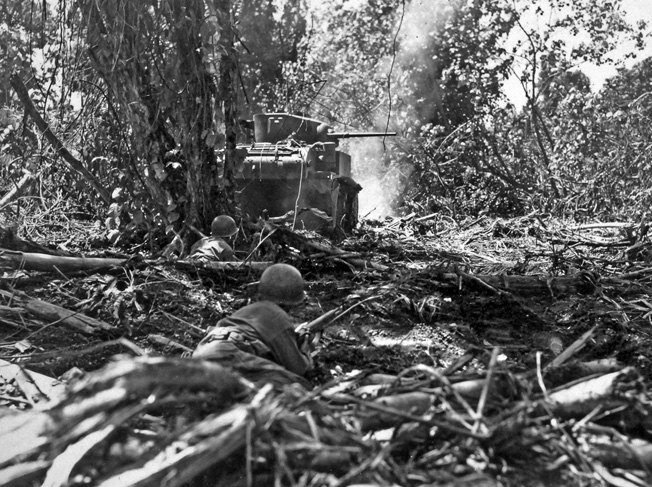
Some of the platoons of Company B, 132nd Infantry joined in the fighting even though this was not part of their original mission. Sergeant Drowley from Company B spotted a machine-gun bunker that had not been observed by the tanks or riflemen on the flank of 2nd Platoon near the junction of the beach and the jungle line. He ran over to one of the M3A1 tanks near the jungle edge while under Japanese small arms fire. On reaching the tank, he climbed up on the engine deck and banged on the turret hatch with the butt of his M1 rifle. He began pointing out the Japanese bunkers to the crew.
After engaging one of the bunkers, the crew handed Drowley a submachine gun loaded with tracer ammunition. He used this weapon to direct the tank fire. The tank came under continuous Japanese mortar and small arms fire, and Drowley was hit in the chest and face. In spite of his wounds, Drowley continued to direct the tank until the Japanese bunker line was overcome. He was later evacuated to the battalion aid station and spent several months in hospitals recovering. For his gallantry, Drowley was awarded the Medal of Honor, which was later presented to him by President Franklin D. Roosevelt.
28 Large Bunkers Destroyed
Later in the morning, the attack paused, and some of the tanks were sent back to re-arm. The flamethrowers had only about 20 seconds of fuel and had to travel back to the rear to pressurize the compressed air tanks and to refill the flamethrower fuel tanks. Around 1330 hours, the advance resumed with five light tanks in the lead. The tanks used both their 37mm guns and the flamethrowers to knock out the Japanese bunkers. During the course of the day’s fighting, a total of 28 large bunkers were destroyed, of which 14 were credited to the flamethrower tanks. Another four were knocked out by riflemen, and one was destroyed by 81mm mortar fire. The remainder were destroyed by combined tank-infantry action.
Besides the tank flamethrowers, the infantry also used M1A1 portable flamethrowers. These were judged to have questionable effect as their duration was too short and the operators were exposed to close-range enemy fire when attempting to burn out the bunkers.
During the day’s fighting, casualties in C/132nd Infantry were one officer and 10 men killed, as well as one officer and 13 men wounded. The 754th Tank Battalion lost two men killed in the initial friendly fire incident while a further 14 men were wounded or injured in the later fighting. The infantry troops involved in the fight for the Hornet’s Nest were awarded five Silver Stars and two Bronze Stars for their actions on January 30. Tank crewmen were awarded a further two Silver Stars. About 80 Japanese troops were killed outside the bunkers, and the 132nd Infantry estimated another 120 to 180 Japanese had been killed inside the bunkers.
Conclusions from the Battle of Bougainville
The after action report of the 754th Tank Battalion concluded, “The perimeter was extended and straightened, defenses under our control made secure, enemy pillboxes were reached and the enemy suffered heavy casualties. The action proved conclusively that the Tank-Infantry team could be used to excellent advantage in jungle terrain.”
The fighting against the Hornet’s Nest underscored the serious problems of tank-infantry communication in close combat and the need for better means for the riflemen to talk to the supporting tank crews. One improvised method employed was the use of field telephones wired into the tanks. This was used during the March 1944 fighting when the 754th Tank Battalion supported the Americal Division in the Battle of the Perimeter, pushing down the coast eastward to Mavavia.
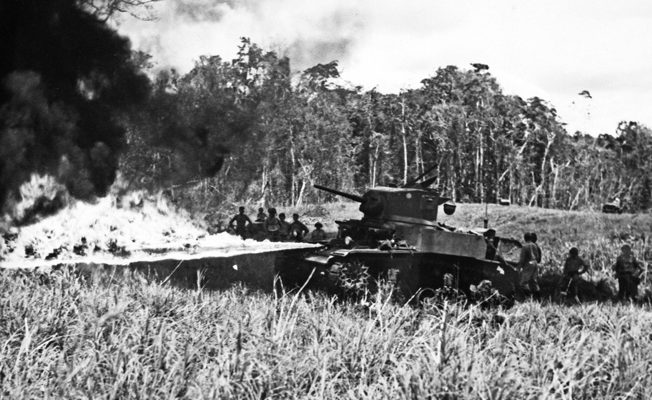
Although the improvised M1A1 flamethrowers mounted in the light tanks had proven more useful than the portable flamethrowers, their range was too short and they ran out of fuel much too quickly. There were only 10 gallons of fuel in the two tanks, which provided a flame duration of only 20 seconds. Once the fuel was exhausted, the tank had to return to the rear to replenish the flamethrower. Following its debut on Bougainville, the 1st Marine Tank Battalion used the improvised mechanized flamethrowers on the Arawa Peninsula on New Britain in February 1944. This use was less successful because the flamethrower igniters failed. One crewman finally ignited the stream by throwing a thermite grenade in front of the tank.
Later Improvements to the Flamethrower Tank
There were a string of later uses of these devices with mixed results. The lingering problems with the ignition systems led to a variety of improvisations back on New Caledonia. One approach was to cut a small hole in the glacis plate of the M3A1 to fit a .30-caliber machine gun. Tracer ammunition could be used to ignite the fuel stream. Another approach was to leave the bow .30-caliber machine gun in place and reroute the flamethrower so that it was externally attached to the machine gun barrel. This permitted the machine gun to be used both for igniting the fuel stream and its usual role.
The fighting in the Pacific in early 1944 convinced senior Army and Marine officers of the urgent need for flamethrower tanks to deal with the threat posed by Japanese bunkers. As the war moved into the Central Pacific with its rocky volcanic and coral islands, the Imperial Japanese Army began to make increasing use of fighting positions carved into the local terrain.
In early 1944 a new, custom-designed auxiliary flamethrower, the E4-5, entered production. It began to arrive in the summer of 1944. Local initiatives proved more successful. The Chemical Warfare Service (Pacific Operations Area) office in Hawaii began to adapt the Canadian Ronson flamethrower to the turrets of M3A1 tanks. Nicknamed Satans, these flamethrower tanks saw their combat debut on Saipan and Guam in the summer of 1944. Flamethrower tanks continued to grow in importance during the final year of the war in the Pacific.
Steve Zaloga is the author of U.S. Flamethrower Tanks of World War II, published by Osprey Publishing. He resides in Abingdon, Maryland.

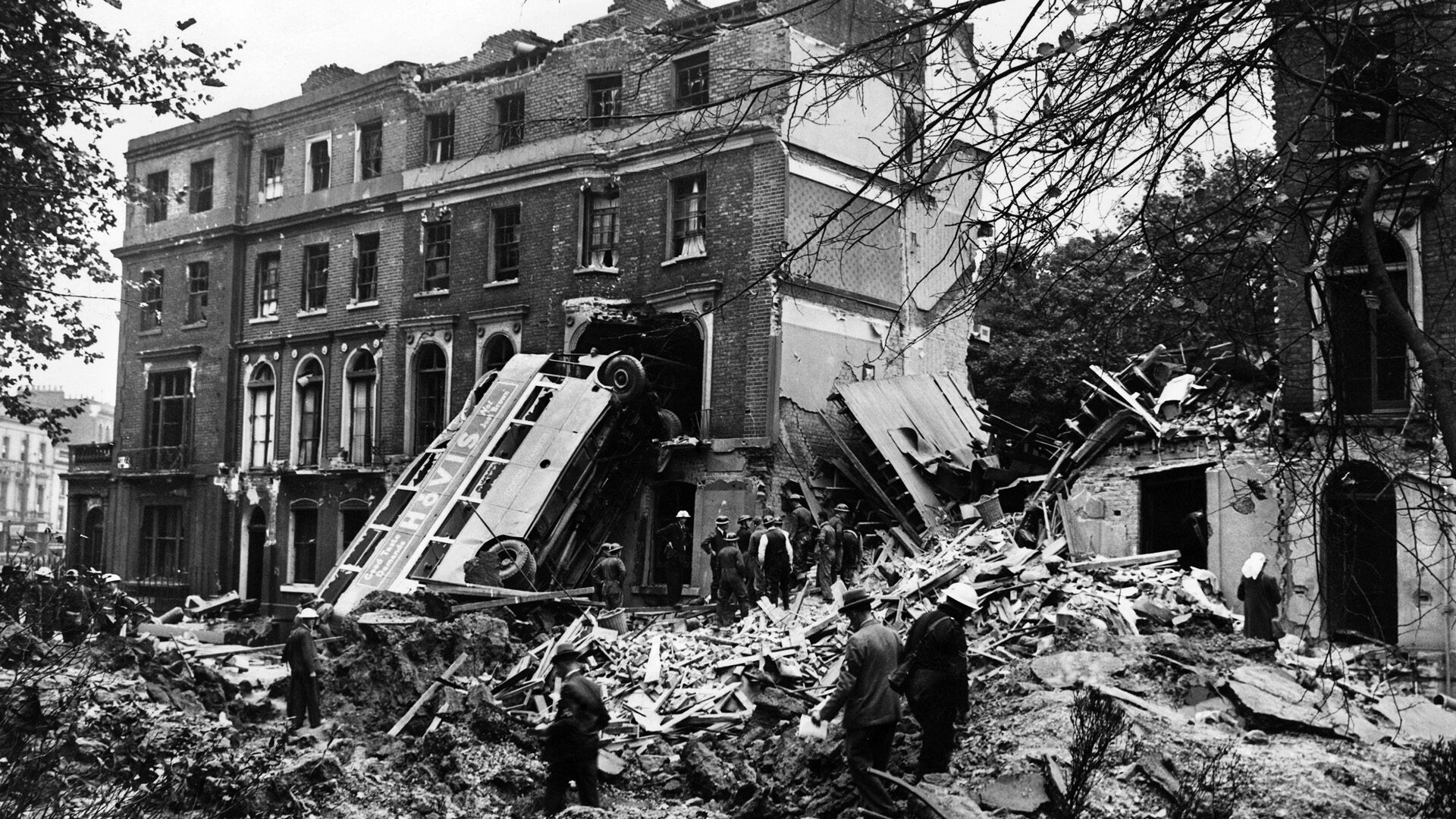
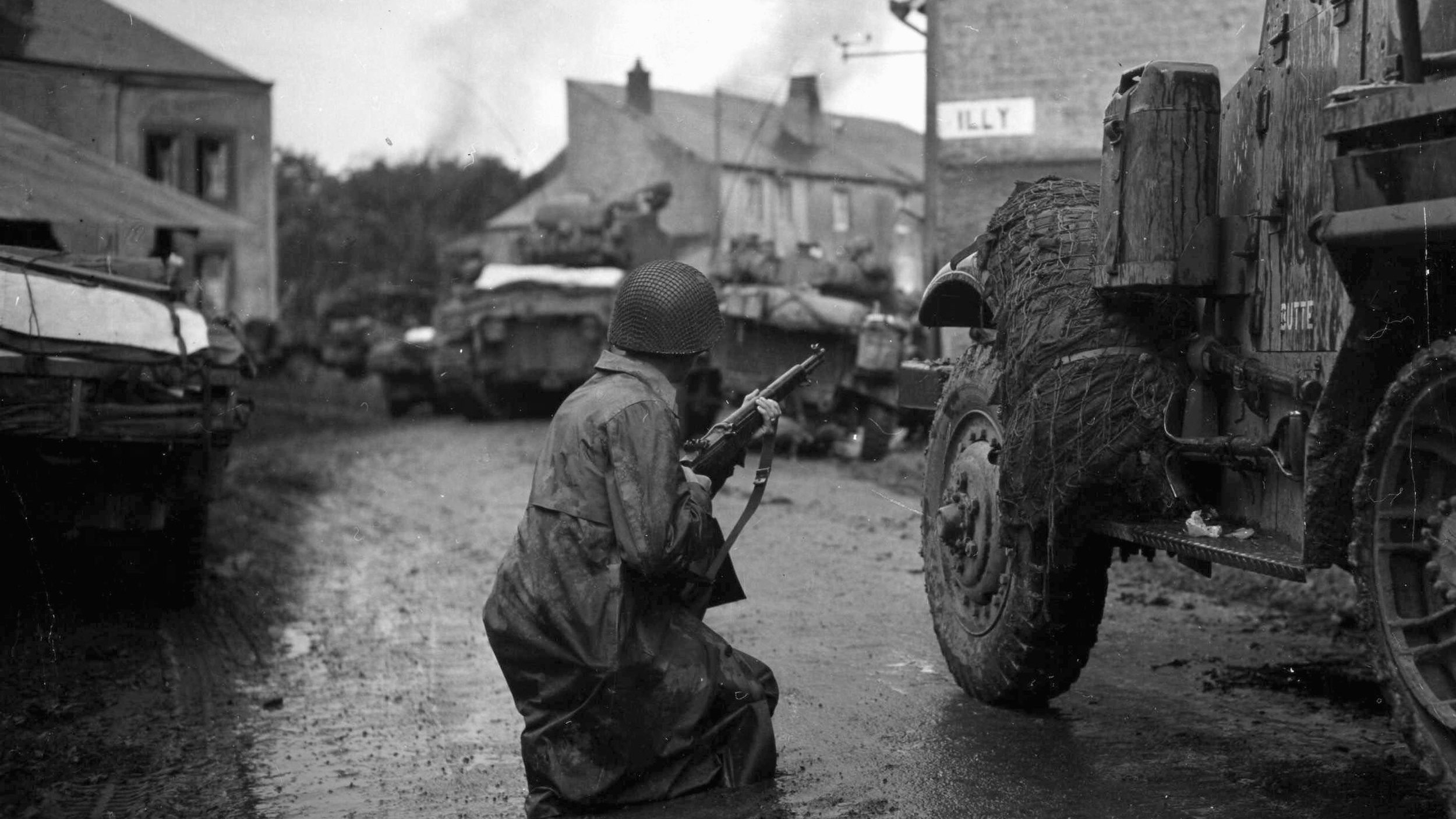
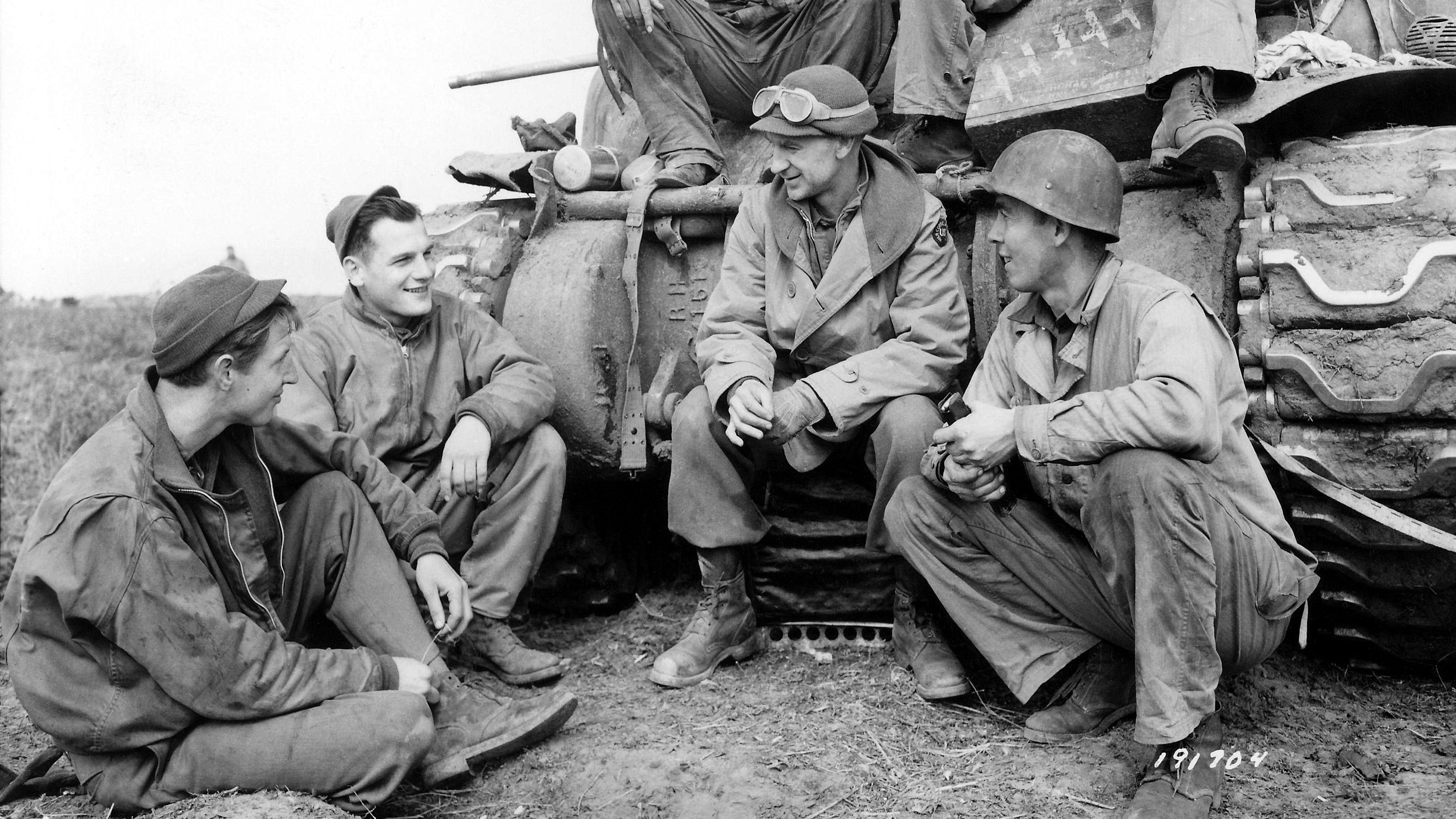
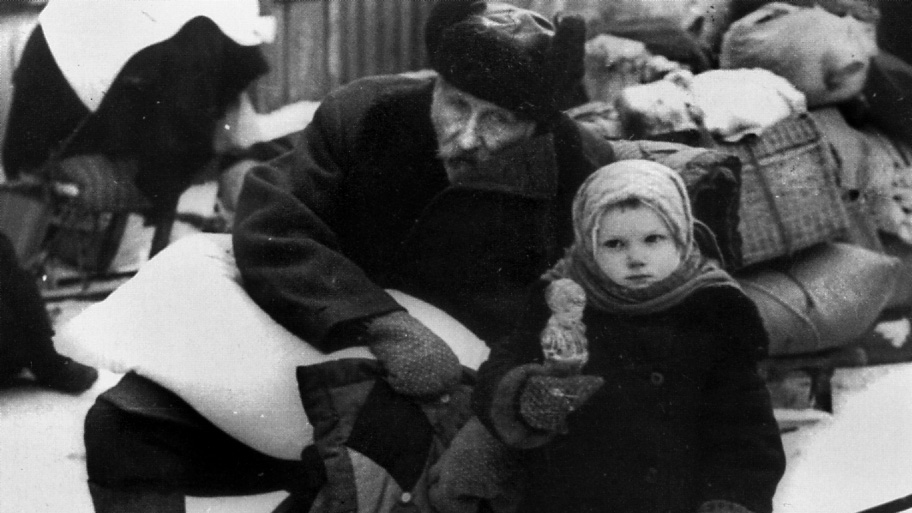
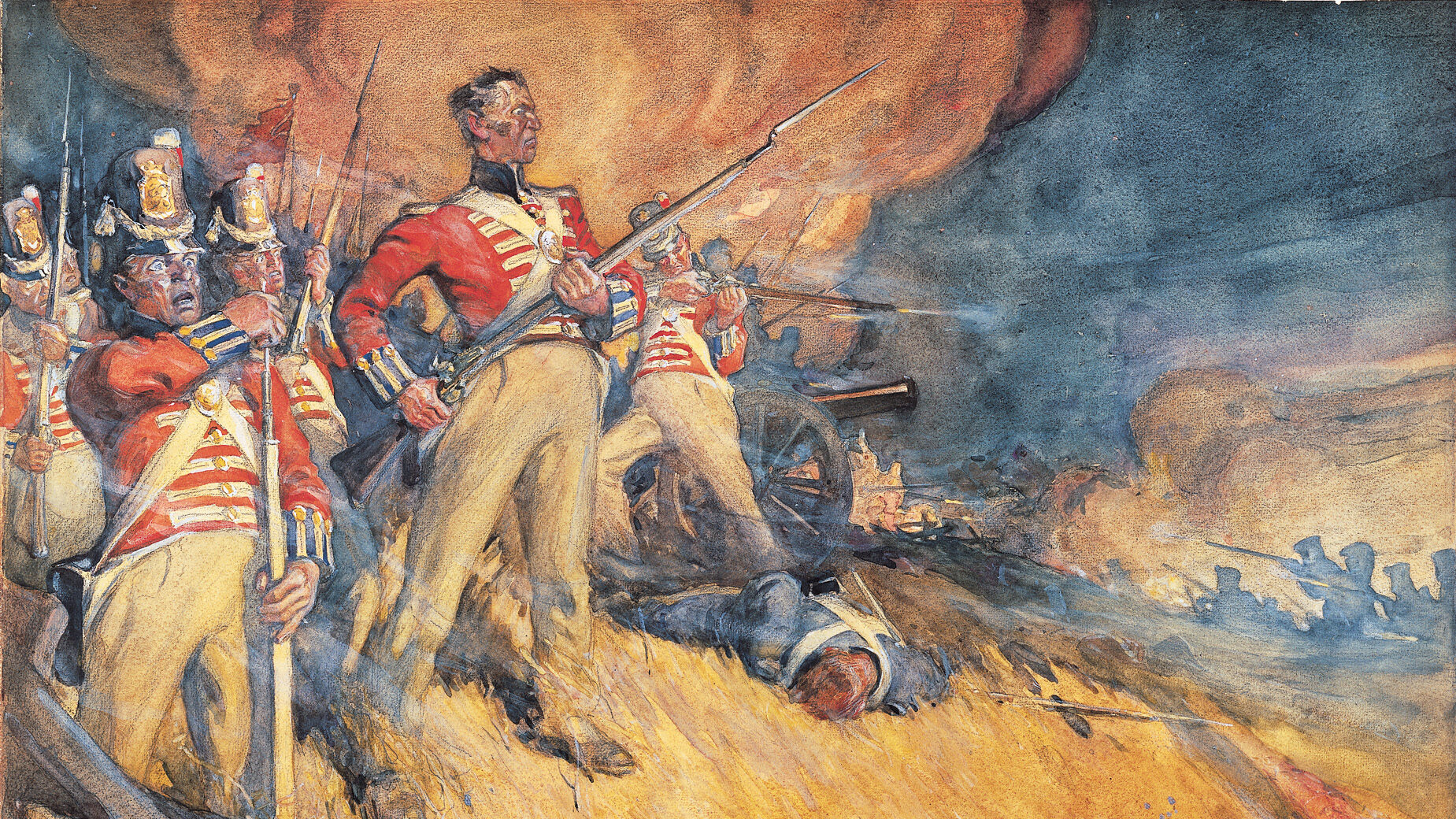
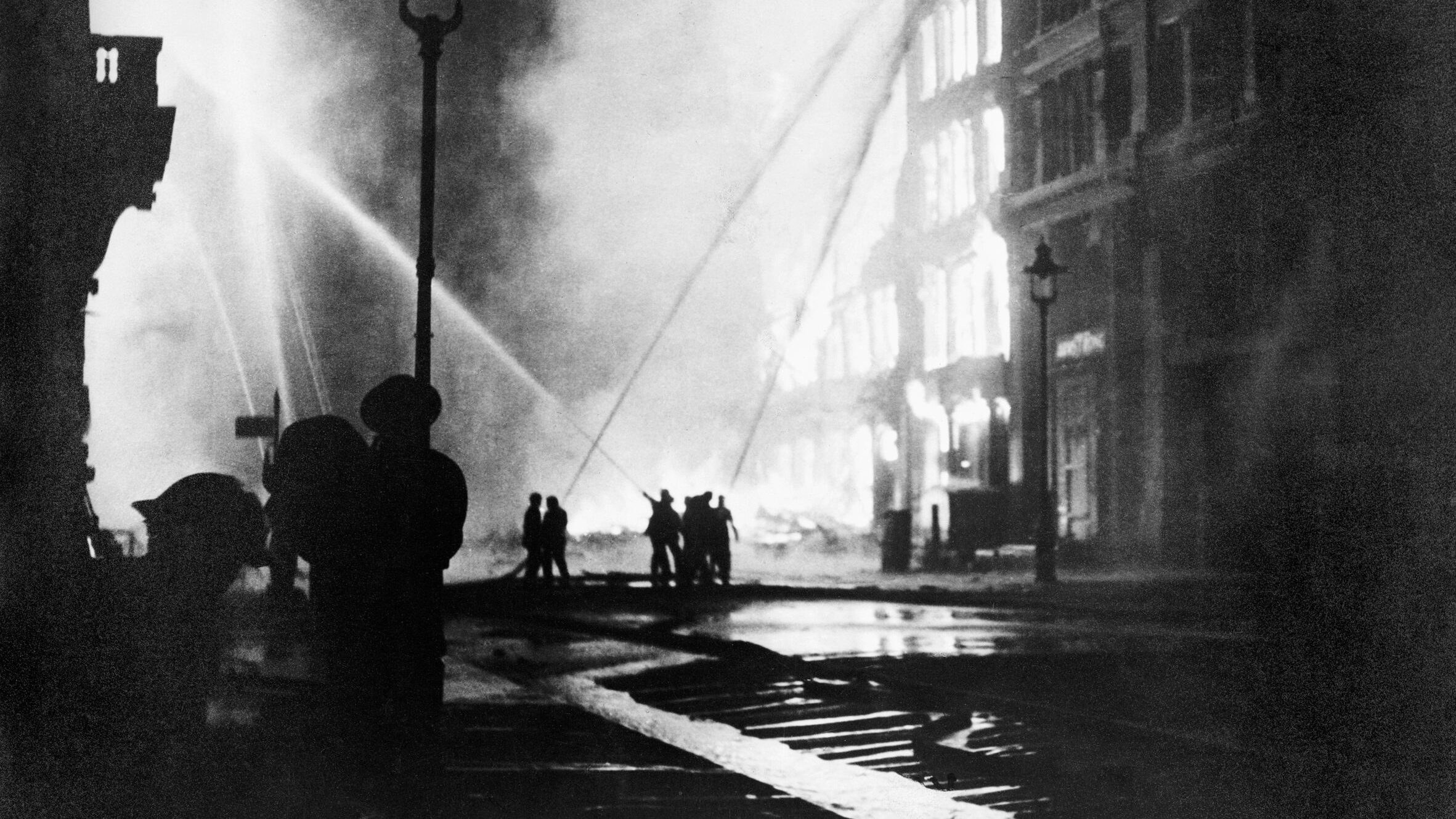
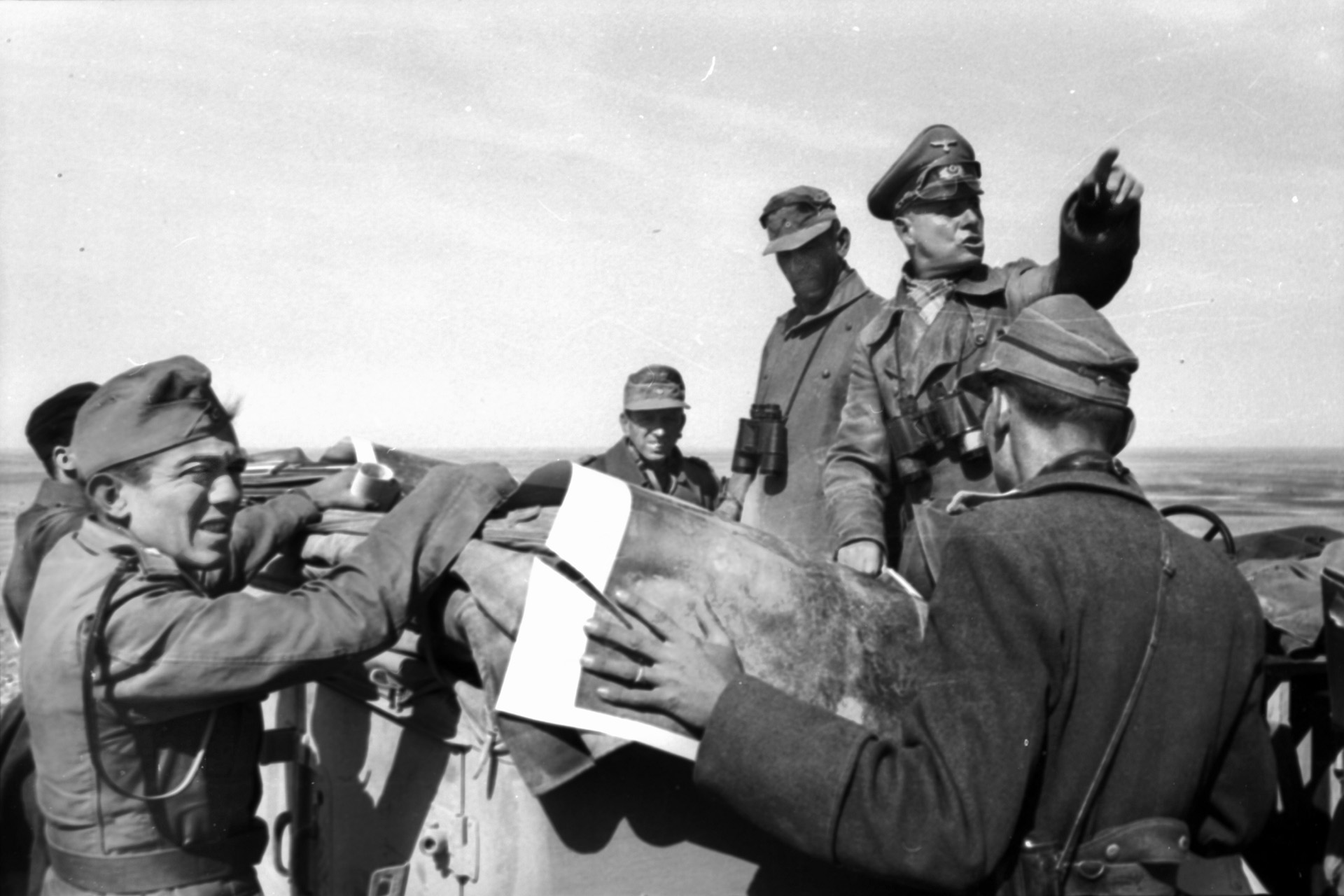
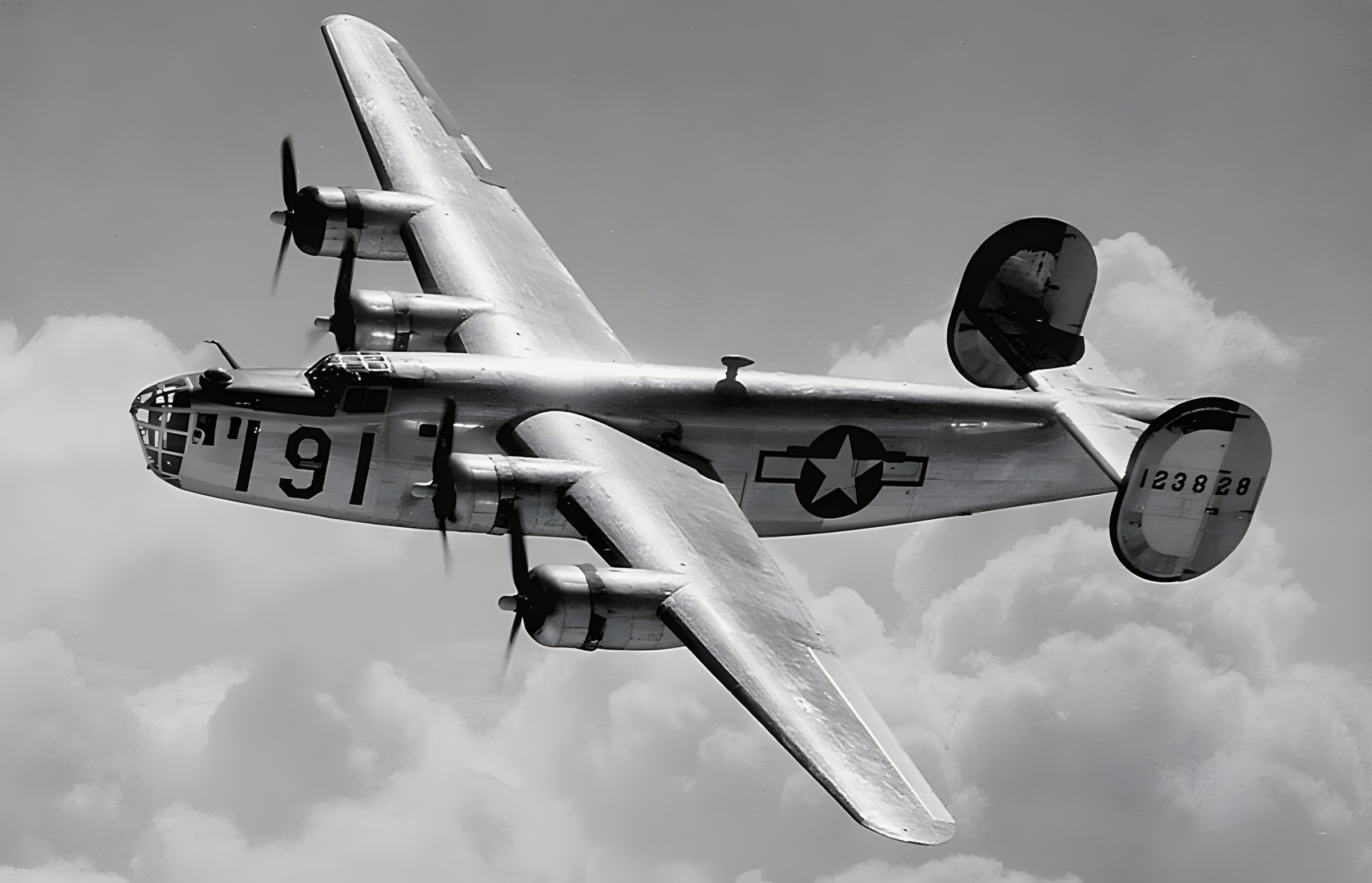
Join The Conversation
Comments
View All Comments